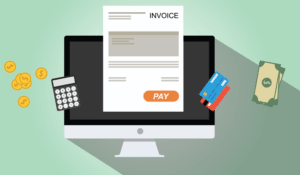Chart of Accounts Example Format Structured Template Definition

So,you will have to keep your source documents handy if you are preparing your General Ledger Accounts manually. In addition to this, your ledger contains detailed information with regards to every transaction. For instance, your Purchase Ledger contains the following how are accounts in the general ledger numbered supplier details. Accordingly, you do not record details of each sales transaction undertaken with various customers in the Accounts Receivable Control Account. Here, a Subsidiary Ledger is a ledger recording detailed information of the related Control Account.
Using general ledger codes

A company selling merchandise on credit will record these sales in a Sales account and in an Accounts Receivable account. The type of marketing accounts your company has will vary based on the type of product you’re selling or service you offer, as well as the size of your business. Here’s an example of how this section could be organized in your chart of accounts.
Collecting Information for Financial Reports

This gives you the chance to reconcile these errors before closing your books at the end of an accounting period. The GL serves as the basis for a company’s income statements, balance sheets, and cash flow statements. By keeping your general ledger up-to-date, stakeholders, investors and analysts can accurately assess the company’s performance.
- You record the financial transactions under separate account heads in your company’s General Ledger.
- When a company receives payment from a client for the sale of a product, the cash received is tabulated in net sales along with the receipts from other sales and returns.
- Accordingly, you do not record details of each sales transaction undertaken with various customers in the Accounts Receivable Control Account.
- For instance, your asset accounts may start with “1,” your liability accounts may begin with “2,” and so on.
- In addition to keeping individual transaction records, you should also create a chart of accounts as part of your bookkeeping.
- Each department will have its own phone expense account, its own salaries expense, etc.
- Sub-ledgers within each account provide details behind the entries documented in account ledgers, such as if they are debited or credited by cash, accounts payable, accounts receivable, etc.
Operating Revenue
- This process is excellent for identifying errors or discrepancies between the general ledger and the external source.
- By keeping your general ledger up-to-date, stakeholders, investors and analysts can accurately assess the company’s performance.
- Each department contained within the transaction category is assigned a number.
- It records all the transactions that take place between you and your debtors.
- The four remaining classifications of accounts are referred to as income statement accounts since the amounts in these accounts will be reported on the financial statement known as the income statement.
- You can save time on bookkeeping tasks with QuickBooks experts by your side.
The main types of accounts are assets, liabilities, revenue, expenses, and equity. These should have their separate records but also be organized into one main chart of accounts. The number of accounts you organize in your general ledger will vary based on the size of your company. The smaller your operations, the smaller your chart of accounts will likely be.


Each income statement account is closed in order to begin the next accounting year with a zero balance. The four remaining classifications of accounts are referred to as income statement accounts since the amounts in these accounts will be reported on the financial statement known as the income statement. To maintain financial health, your total debit balances must equal your total credit balances. When you record a financial transaction, it’s called a journal entry, because bookkeeping has always been done by hand, in journals.
How to Create a Numbering System for a Chart of Accounts
Here’s how you might organize these accounts in your chart of accounts. A general ledger almost resembles a T-shaped account with entries on debit and credit sides. While debits show an increase in assets or expenses, credits indicate a decrease in assets (or, often, a boost in liabilities or revenue).
How a General Ledger Functions With Double-Entry Accounting
- Adjusting Entries are the entries prepared at the end of the accounting period to consider income or expenses that you have not yet recorded in the General Ledger.
- Adhering to it ensures that the general ledger reflects the company’s financial standing properly, as per the accepted accounting principles.
- There are many different ways to structure a chart of accounts, but the important thing to remember is that simplicity is key.
- Most small businesses assign a three- or four-digit number to each account based on the type of transaction that’s involved.
Income Statement Accounts
- Consider this example of current assets to better visualize how they’re organized.
- This gives you the chance to reconcile these errors before closing your books at the end of an accounting period.
- The role of equity differs in the COA based on whether your business is set up as a sole proprietorship, LLC, or corporation.
- The term “general ledger accounts” is often shortened to “GL accounts” when bookkeepers and accountants speak of them.

